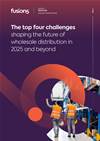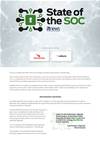Apple has lost a jury trial against the US University of Wisconsin over the use of processor technology in its A7 system on a chip integrated circuit, and now faces up to US$400 million (A$548 million) in damages.

The A7 circuit is used in newer iOS devices such as Apple's iPhone 5s, iPhone 6 and iPad Air 2, and uses processor instruction prediction technology that was patented by Wisconsin University researchers in 1998.
The Wisconsin Alumni Research Foundation (WARF) filed a complaint in a US district court last January, alleging Apple's use of the predictor circuit in the A7 chip violated its "table-based data speculation circuit for parallel processing computer" patent no. 5,781,752, filed in 1996 and granted in 1998.
Apple had contested the validity of the patent, which it cited as prior art in its own patent filing, showing it was aware of the University of Wisconsin's invention, but the argument was rejected by the US patent board.
A jury this week agreed with the university that Apple had used the technology in the A7 chip without seeking a license, and turned down the IT giant's counter motion that the patent was invalid, calling WARF a "non-practicing entity" in the trial.
WARF originally sought US$862 million in damages, but withdraw its pre-trial claim, and is now said to seek US$398.7 million in compensation for the patent violation, legal publication Law 360 reported.
The patent manager had previously taken chip maker Intel to court over the same predictive technology, and settled for US$110 million, court documents showed.

.png&h=140&w=231&c=1&s=0)
.png&h=140&w=231&c=1&s=0)




_page-0001.jpg&w=100&c=1&s=0)

 Digital Leadership Day Queensland
Digital Leadership Day Queensland
 Government Cyber Security Showcase Queensland
Government Cyber Security Showcase Queensland
 Government Innovation Showcase Queensland
Government Innovation Showcase Queensland
 Local Government Focus Day Queensland
Local Government Focus Day Queensland
 Digital As Usual Cybersecurity Roadshow: Brisbane edition
Digital As Usual Cybersecurity Roadshow: Brisbane edition











.jpg&h=140&w=231&c=1&s=0)



